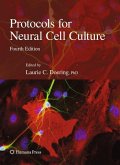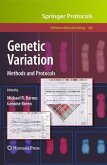Following the completion of the mouse and human genome sequences, a major challengeisthefunctionalcharacterizationofeverymammaliangeneandthedeciph- ing of their molecular interaction network. The mouse offers many advantages for the use of genetics to study human biology and disease, unmatched among other m- mals. Its development, body plan, physiology, behavior, and diseases have much in common, based on the fact that 99% of the human genes have a mouse ortholog. The investigation of gene function using mouse models is based on many years of tech- logical development. In the two decades since gene targeting in murine embryonic stem (ES) cells was first described by Mario Capecchi and colleagues, more than 3000 predesigned mouse mutants have been developed. To date, a variety of mouse mutagenesis techniques, either gene- or phenotype-driven, are used as systematic approaches. The availability of the genome sequence supports gene-driven approaches such as gene-trap and targeted mutagenesis in ES cells, allowing efficient and precise gene disruption. In combination with the use of site-specific DNA recombinases, in particular the Cre/loxP system, gene disruptioncan be directed to specific cell types in conditionalmousemutants. Furthermore,chemicalandtransposonmutagenesisofthe mouse genome enables us to perform phenotype-driven screens for the unbiased identification of phenotype-genotype correlations involved in models of human d- ease. Over the next several years, the mouse genome will be systematically altered, and the techniques for achieving predesigned manipulations will be constantly developed further and improved. The second edition of Gene Knockout Protocols brings together distinguished c-tributorswithextensiveexperienceinthegenetargetingandmousegeneticsfields.
From the reviews of the second edition:
"This comprehensive collection of step-by-step protocols in the field of gene targeting and mouse genetics covers such topics as gene modification in embryonic stem cells ... and mutant phenotype analysis. ... The book will serve as a valuable resource for researchers, scientists, and students interested in these areas. ... This is a well-illustrated book ... . All researchers interested in gene targeting and gene knockout protocols will find this extremely useful." (Omer Iqbal, Doody's Review Service, September, 2009)
"This comprehensive collection of step-by-step protocols in the field of gene targeting and mouse genetics covers such topics as gene modification in embryonic stem cells ... and mutant phenotype analysis. ... The book will serve as a valuable resource for researchers, scientists, and students interested in these areas. ... This is a well-illustrated book ... . All researchers interested in gene targeting and gene knockout protocols will find this extremely useful." (Omer Iqbal, Doody's Review Service, September, 2009)









